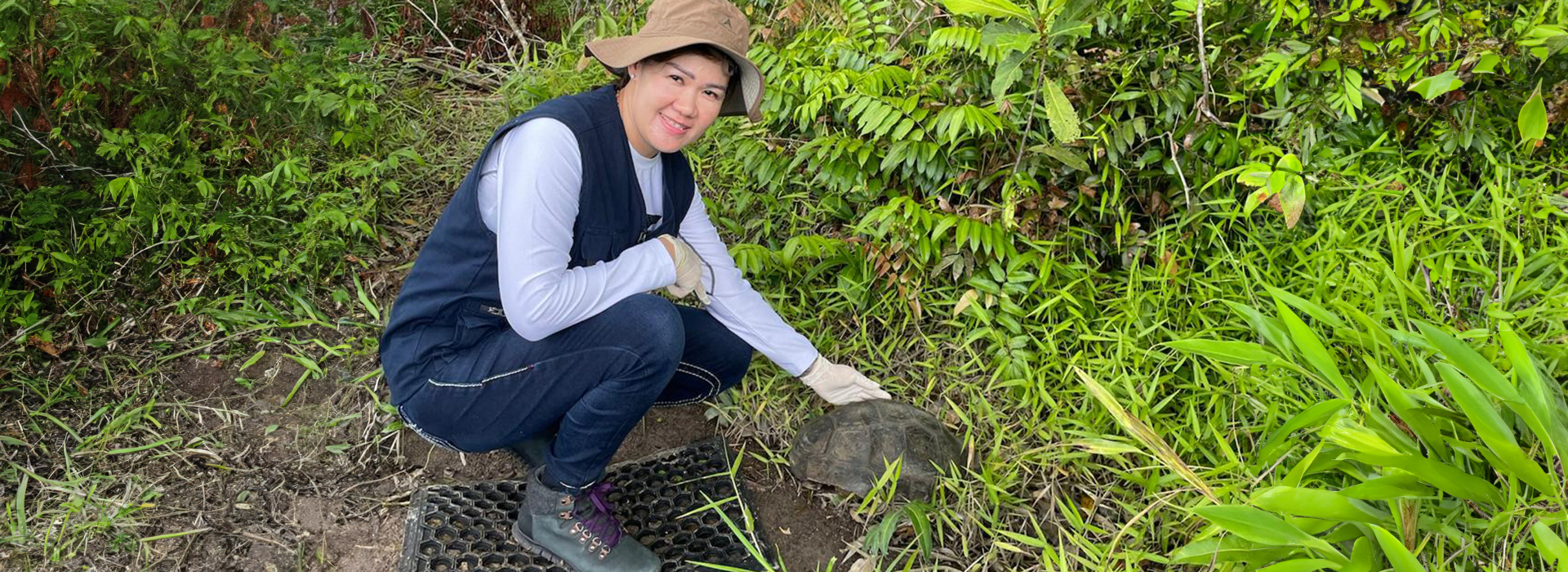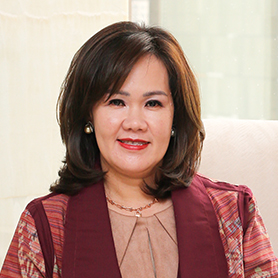Elim Sritaba: From Finance to Forestry: A Sustainability Leader’s Journey to Making an Impact
Elim’s three-decade career has taken her from finance to forestry to sustainability. In that time, she has learned that true leadership comes from active listening, understanding different perspectives and having the confidence to drive change even in the face of challenges.


Elim Sritaba
Chief Sustainability Officer,
Asia Pulp & Paper (APP)
Q.
Tell us more about your career journey. You’ve held a wide range of roles before. How did you land on your current role?
I first joined APP nearly 30 years ago, in 1997, in a finance-related role. I took a break in my career in 1999 after having my first child, and I spent some years in my family’s jewellery business.
My return to APP in 2005 was focusing on internal control and was soon moved to forestry operations. This was the point at which I began to learn more about sustainability. I worked on the implementation of APP’s first Forest Conservation Policy, including ensuring that forestry commitments were both realistic and implementable.
2017 marked my career shift towards sustainability. I happened to be in the room when a discussion on filling up a Chief Sustainability Officer role was brought up, and someone turned to me suggesting that my forestry experience probably made me a good fit. Although I wasn’t prepared for the role, I decided to give it a shot, and there is no looking back.
Q.
What are some key principles that have shaped your leadership and career?
One of the most important things I have learned is the power of listening. I realised that before influencing others or trying to find solutions, I needed to understand the concerns of my stakeholders.
When I first started working in forestry, I wondered why people were so concerned about peatlands. A professor I consulted explained the role they play in the ecosystem. That helped me understand why people get so upset when it is destroyed. You really need to listen and have a thorough understanding of the situation before you can influence others.
Another key principle is knowing right from wrong. People will always try to persuade you about something, but it’s essential to dig deeper and understand their true motivations, to help shape towards positive, meaningful outcomes.
Finally, it is important to be confident and trust your own judgement. Earlier in my career, I often second-guessed myself and have injected more confidence over the years to voice my opinions. Now, I encourage others to speak up and share their insights. If you have the right information and a strong foundation, it is important to make your voice heard.
Q.
Sustainable forestry in Indonesia requires a lot of work with resident communities. What have you found works best?
At APP, our forestry operations are close to local communities and residences.
In 2015, for example, several large-scale forest fires occurred in areas that we oversaw or managed. We discovered that many of these fires stemmed from slash-and-burn practices adopted by villagers. Instead of heavily penalising them, however, we addressed the root cause of these practices: economic hardship.
We started a programme (Desa Makmur Peduli Alam) to provide agricultural support and alternative livelihoods for communities living in and around forest areas. We also assigned assistants to help the villagers through their farming processes.
With economic concerns addressed, we have seen declines in illegal and harmful practices such as the slash-and-burn method of clearing land.
Q.
When it comes to changing organisation culture in favour of greater sustainability, what is your go-to method?
I think a lot about how to communicate effectively internally and externally. Often, I will work with our communication team to post content that can reach out to our employees. I also actively raise awareness of issues or ways we can do better.
Also, I am conscious of cultural nuances and different levels of awareness across teams and countries. Using sharing mechanism could trigger more people to understand and moving to toward APP Sustainability Vision & target.
Q.
APP has set targets to cut its Scope 1 and Scope 2 emissions by 54.6% by 2033; and reduce its Scope 3 emissions by 32.5% in the same year. How have you been able to balance sustainability initiatives with business needs.
Prioritising sustainability costs money, so it is sometimes an unpopular choice. My method of convincing the stakeholders has been to highlight the risks of inaction. Whenever I propose sustainability initiatives, I outline the potential risks – whether regulatory penalties, reputational damage or long-term financial losses – and the consequences of not addressing these risks.
Sometimes, a proposal is not approved immediately. I will persevere and wait for the right moment to reintroduce it.
Also, some things can be cost-efficiently done. Our oldest pulp mills run on coal, and there have been suggestions to replace these coal boilers. But doing so would cost a lot. Instead, we are focusing on energy efficiency improvements to reduce emissions while gradually transitioning to a biomass-based energy source. Our newest mill, for instance, is designed to operate entirely on biomass. Additionally, we are exploring the possibility of powering our mills using others potential renewable with affordable cost.
Q.
What other investments or innovations have made a difference to APP?
Digital technologies have proved very helpful for forest monitoring. In 2016, we partnered with a Canadian company to deploy satellite-based monitoring that sends us alerts about illegal trespassing and unauthorised logging activity, and now the system has been managed inhouse with third party audited. We now also publish our forest monitoring data on our website, demonstrating transparency and accountability.
Q.
What is the advice that you would give to leaders driving sustainability?
True leadership in sustainability and beyond requires active listening, confidence in decision-making, and a commitment to understanding diverse perspectives. To drive meaningful change, leaders must deeply understand stakeholder concerns, balance short-term costs with long-term benefits, and foster collaboration across communities and teams. Sustainability is not just an environmental goal but a strategic imperative that demands innovation, transparency, and perseverance.